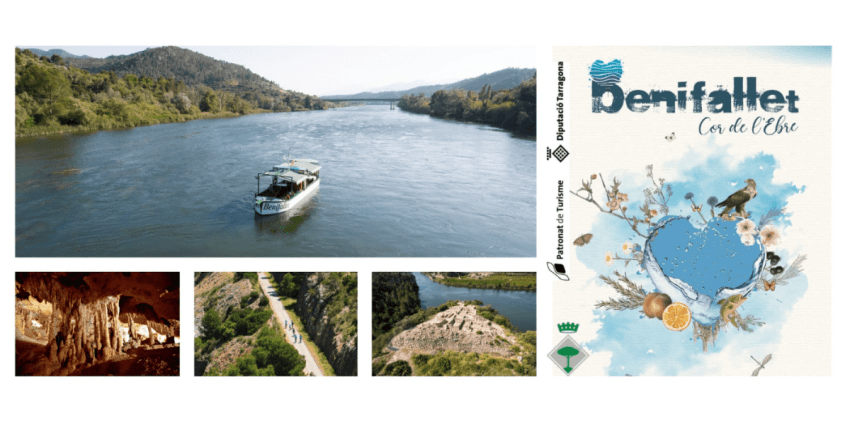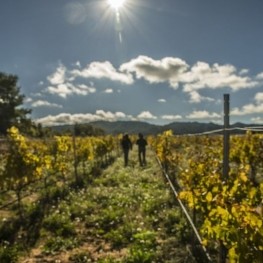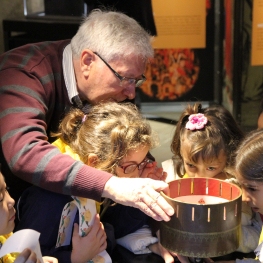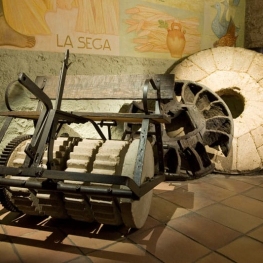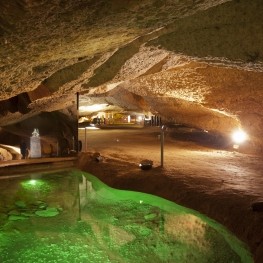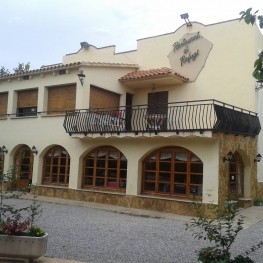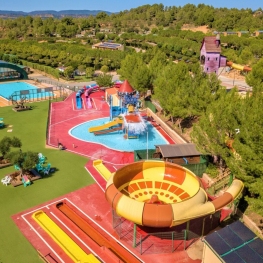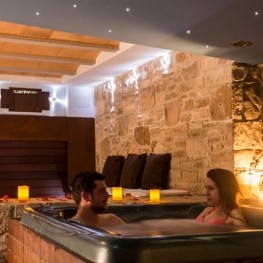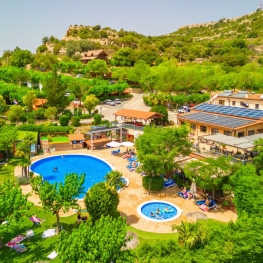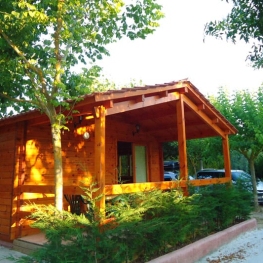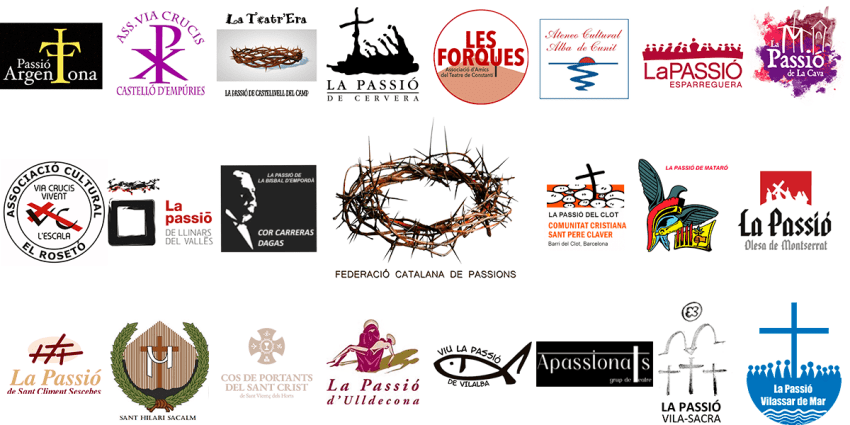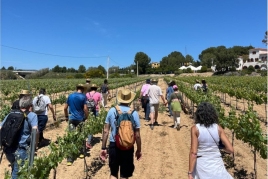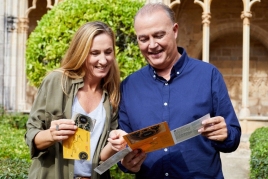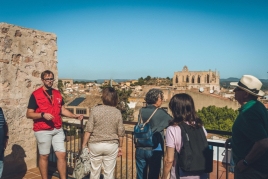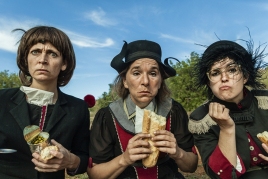Route through the monastery of Santa María de Poblet
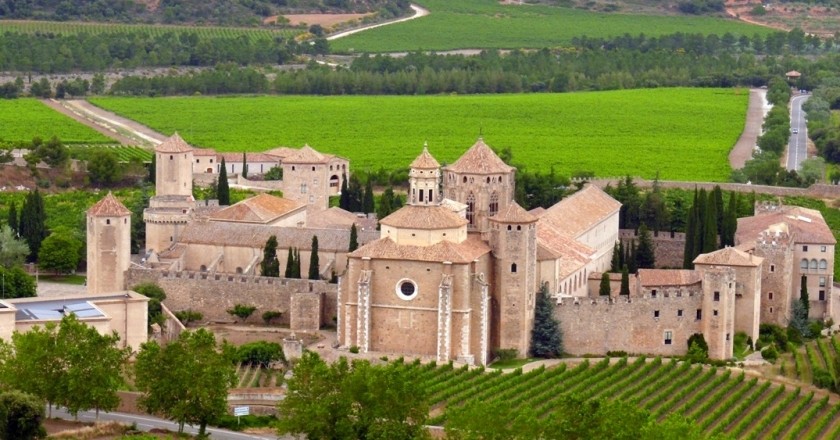
Have you not visited the Cistercian Monastery of Santa María de Poblet?
We suggest a visit to this magnificent heritage building of our country, in the municipality of Vimbodí-Poblet, near the municipality of Espluga de Francolí.
The structure of the Santa María de Poblet monastery is made up of three closed ones, surrounded by a wall. The first enclosure (the outermost) contains buildings from the 16th century. In this part of the monastery there were warehouses, workshops, day laborers' homes and other dependencies related to the economic life of the community. Also conserved in this area is the Gothic chapel of San Jorge, built in 1452, which consists of a single nave with a pentagonal apse and covered with a starry vault. The fortified Golden Gate gives way to the second enclosure, consisting of the Plaza Mayor, around which are the remains of the hospital for the poor built in 1207, the Romanesque chapel of Santa Caterina and Bolsería. The third closed or central nucleus is fortified and contains the church, the cloister and the monastic rooms themselves.
The wall has a perimeter of 608 meters, a height of 11 meters and a thickness of 2 meters. It has battlements and a set of square or polygonal towers, two of which flank the Puerta Real. It should be noted that the tower of San Esteban, at the back of the complex, was built on top of the Romanesque chapel of the same name.
The church is a building with a basilica plan, with three naves with a transept and an apse with an ambulatory. The roof is vaulted towards the central nave, reinforced by transverse arches resting on semi-columns attached to a pillar, and ribbed on the sides. The transept also has a pointed vault and in the arches of communication with the nave is where we find the royal tombs. The chevet is made up of a large semicircular apse traversed by an ambulatory, covered with ribbed vaults, in which five semicircular apses open , the same as those that open the arms of the transept.
Notable elements inside the temple are the Renaissance altarpiece made by Damián Forment (1480-1540, which is in the presbytery, and the royal tombs, located to the right and left of the transept and supported by two lowered arches. the nave are the tombs of Jaime I, Pedro the Ceremonious and his three wives, and Fernando de Antequera. On the right side are those of Alfonso II, Juan I and his two wives, and Juan II and Juana Enríquez, parents of Ferdinand the Catholic Elsewhere in the church are the tombs of Alfonso el Magnánimo and Martín el Humano, which complete the set of royal burials in Poblet.
The main cloister, located on the north side of the church, was initiated according to the norms of Cistercian architecture, but on the whole it shows a predominance of fully Gothic forms. The southern wing and the monks' basin remain from the first construction period. The oldest rooms in the complex are distributed around it, built between the 12th and 13th centuries: the chapter house (in the eastern gallery), the refectory, the kitchen and the heater (in the northern gallery), the library, the former scriptorium (in the northeast corner) and the bedroom, built over the library and chapter house.
In the main square of Poblet there is a stone cross on some steps. The shaft has at its base the abbey arms of Juan de Guimerà and the date of 1568. On the cross is the image of Christ and the Virgin.
The first historical references to Poblet date from the mid-12th century, when Count Ramon Berenguer IV donated the land to Abbot Sancho of the Fontfreda monastery for the establishment of a Cistercian community.
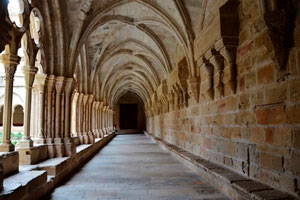 Throughout the second half of the 12th century, the first buildings of the complex were made: the church, the refectory, the infirmary and part of the cloister. In 1185 there was already a hospital for the poor and it also had an important library. In 1207, a new hospital was built . The construction of the chapter house, the sacristy, the monks' rooms, the refectory for converts, the bedroom and the cellar were made during the 13th century.
Throughout the second half of the 12th century, the first buildings of the complex were made: the church, the refectory, the infirmary and part of the cloister. In 1185 there was already a hospital for the poor and it also had an important library. In 1207, a new hospital was built . The construction of the chapter house, the sacristy, the monks' rooms, the refectory for converts, the bedroom and the cellar were made during the 13th century.
In the days of Abbot Copons (1316-1348), he built in the entrance atrium, the north nave of the church was remodeled and the construction of the dome began. In 1340 Pedro III the Ceremonious commissioned Master Aloi and Pedro Guines to carry out royal tombs in Poblet, in which, from 1347, the masters Aloi de Montbrai and Jaume Cascalls worked in partnership. The works on the tombs progressed very slowly, and lasted until 1377, when the king decided to convert Poblet into a royal pantheon for the Catalan-Aragonese crown. King Pedro also decided to build the wall that protects the monastery, begun in 1369 before the danger of an attack by the troops of Pedro el Cruel de Castilla. Towards the end of the 14th century, work began on a palace for King Martin, which remained unfinished.
The remodeling of the cloister of San Esteban and the construction of the cloister of novices, as well as the chapel of San Jorge date from the 15th century. The realization of the Golden Gate also corresponds to this same century.
In the 16th century, between 1527 and 1529, the sculptor Damián Forment made the main altarpiece. Later, in the 17th century the Baroque façade was built, and in the 18th century the new sacristy.
The monastery lasted until the exclaustration of 1835, date from which it deteriorated and suffered serious damage.
In 1849, the Commission of Historical and Artistic Monuments tried to stop the process of destruction. Later, in 1921, the complex was declared a national historical monument.
The reconstruction of the monastery began in 1930, largely promoted by the patron Eduard Toda (Reus, January 9, 1855 - Poblet, April 26, 1941). That same year he founded the Board of Poblet. In 1935 Abbot Guimerà's cross was mounted , which Toda had found in an antique dealer in Paris, behind the Chapel of Santa Catalina. During the war this cross was hidden and once it was finished it was placed in its current place.
Since 1940 the conventual life returned to the monastery, and in recent years works have been carried out that try to restore the complex to its former splendor.
In addition, in order to preserve Poblet's surroundings from probable urban, aesthetic and ecological attacks, the Generalitat of Catalonia approved in 1984 a law to protect the environment, which covers an area of 21 hectares of forest.
Authorship of the text: Antonio Mora Vergés
You may also be interested in: Know the religious heritage
What to do
Mas Blanch i Jové
La Pobla de Cérvoles (a 12.5 Km)Mas Blanch i Jové is a winery belonging to the DO Costers…
Espai museístic del Cinema - Col·lecció Josep Maria Queraltó
Vallbona de les Monges (a 14.1 Km)This is the first space dedicated to the seventh art in the…
Museu de la Vida Rural
L'Espluga de Francolí (a 4.6 Km)A visit to the Rural Life Museum of the Carulla Foundation, located…
Coves de l'Espluga de Francolí
L'Espluga de Francolí (a 4.3 Km)The L'Espluga Caves are natural cavities used by man since Paleolithic times.…
Where to eat
Where to sleep
Camping Montblanc Park Capfun
Tarragona (a 11.5 Km)In the interior of the Costa Daurada, the Montblanc Park campsite offers…
El Molí Oleari
Montblanc (a 9.6 Km)Molí Olear is a space of calm and sensations, designed to offer…
Càmping Capfun Serra de Prades
Vilanova de Prades (a 9.7 Km)In the middle of the heart of nature, the Prades campsite is…
Càmping Prades Park
Prades (a 11.7 Km)Camping Prades Park offers an ideal setting for what most appeals to…

